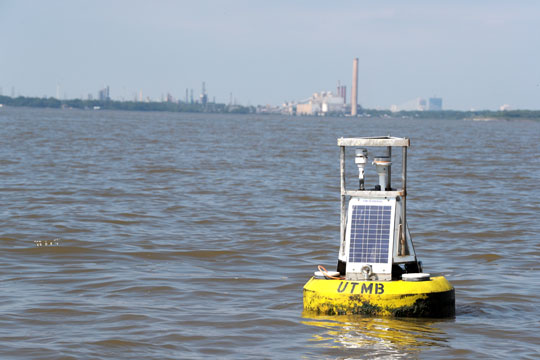Scientists from nearly a dozen organizations throughout the region are visiting The University of Toledo Lake Erie Center Tuesday, May 15, to calibrate equipment that will be deployed in buoys across Lake Erie to measure water quality throughout algal bloom season.
“It’s like in the old movies when the mission leader says, ‘Let’s synchronize our watches,’ before the team splits up,” Dr. Tom Bridgeman, UT professor of ecology and director of the UT Lake Erie Center, said. “This collaboration helps to ensure conformity of data coming from the probes for the next few months.”

UT’s water quality and sensor buoy annually rides the waves off the shore of the Maumee Bay State Park Lodge and Conference Center in Oregon.
UT’s water quality and sensor buoy annually rides the waves off the shore of the Maumee Bay State Park Lodge and Conference Center in Oregon. It is part of an early-warning network of buoys throughout the western Lake Erie basin that provides live data vital in the assessment of harmful algal blooms.
“We go out on our research vessel at least once a week for sampling throughout the summer, but the buoys are out there all the time,” Bridgeman said. “Even when it’s too rough for boats to be on the lake, the buoys can alert if something is developing or changing quickly.”
The buoys are equipped with what is called the YSI EXO sonde, a black and blue instrument composed of several probes to measure various water quality parameters, including how much blue-green algae is present, water temperature, clarity, oxygen levels, turbidity and pH.
It’s one piece of the battle plan to track and combat the growing harmful algal bloom in order to sound the early warning for water treatment plant operators as they work to provide safe public drinking water.
“We are watching very closely and are prepared,” Bridgeman said.